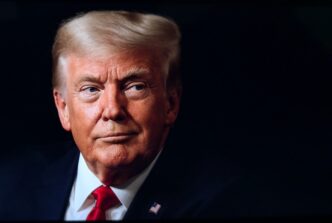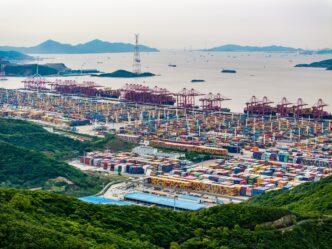Executive Summary
- Tariffs imposed by President Trump are primarily absorbed by American consumers and businesses, leading to “sneakflation,” with economic data indicating consumers will ultimately bear a significant and increasing share of these costs.
- The gradual impact of tariff-driven price increases is attributed to businesses initially stocking up, costs being split across supply chains, and President Trump’s staggered tariff implementations and exemptions.
- Businesses anticipate continued price increases this year as tariffs become permanent, with the full effect on consumer purchasing power, particularly for lower-income Americans, expected to become noticeable over a year or two.
The Story So Far
- The current phenomenon of “sneakflation,” where American consumers and businesses are increasingly absorbing the costs of tariffs, stems from President Trump’s policy of imposing these tariffs despite his assertions that foreign nations would bear the financial burden. However, economic data and business experiences consistently show that these costs are predominantly passed onto domestic entities, with the gradual nature of this impact attributed to factors like initial business stocking and staggered implementations, though it is now projected to intensify.
Why This Matters
- Contrary to claims that foreign countries bear the costs, American consumers and businesses are increasingly absorbing the financial burden of President Trump’s tariffs, leading to a phenomenon dubbed “sneakflation.” This gradual but significant passthrough is expected to cause a substantial rise in prices for imported goods, with consumers projected to absorb the majority of these costs, ultimately diminishing household purchasing power, especially for lower-income Americans, as the effects integrate more fully into supply chains.
Who Thinks What?
- President Trump claims that foreign countries bear the costs of the tariffs imposed.
- Economic data, academic research, and financial analysis, such as that from Goldman Sachs, indicate that U.S. consumers and businesses primarily absorb the costs of tariffs, with a significant majority expected to fall on consumers.
- Businesses anticipate raising prices in response to tariffs, initially sharing the burden with suppliers but ultimately expecting to pass more costs onto consumers as the tariffs become more permanent.
American consumers and businesses are increasingly absorbing the costs of tariffs imposed by President Trump, a phenomenon some are calling “sneakflation.” Despite claims by President Trump that foreign countries bear these costs, economic data, academic research, and business experiences indicate that the burden is primarily falling on domestic entities, with the impact expected to intensify as more tariffs take effect and integrate into supply chains.
Evidence of Cost Absorption
One indicator of who absorbs tariff costs is the movement of U.S. import prices. If foreign exporters were lowering their pre-tariff export prices, it would manifest as lower or falling U.S. import prices. However, recent import price data has largely remained steady, with a slight increase observed since the November election and March, following new tariff announcements. While a minor dip in import prices from China has been noted, prices from most other countries have been flat, suggesting that importers are passing on these costs.
Financial analysis further underscores this trend. Goldman Sachs estimates that U.S. consumers absorbed 22% of tariff costs through June, a share projected to rise significantly to 67% by October. The firm anticipates that approximately 70% of the direct costs of tariffs will ultimately fall on consumers, a figure that could reach 100% when considering spillover effects, such as domestic producers raising their prices in response to the altered market conditions.
Understanding the Gradual Impact
The slow emergence of tariff-driven price hikes can be attributed to several factors. Businesses initially stocked up on goods before tariffs took effect, allowing them to delay immediate price adjustments. Additionally, higher costs are often split across the supply chain, diluting the immediate impact on any single entity. President Trump’s approach has also involved staggered tariff implementations and various exemptions, further contributing to a gradual passthrough.
Broader economic conditions have also played a role in tempering overall inflation. Deflationary trends, falling gasoline prices, and depressed consumer demand have helped to keep the general inflation rate relatively tame, even as specific import costs have begun to rise. Recent reports highlight a 5% increase in the cost of imported goods and a 3% increase in domestically produced goods compared to pre-tariff trends.
Business Expectations and Future Outlook
The passthrough of tariffs is expected to continue steadily, though its extent may be influenced by the competitiveness of specific product categories and industries. Experts suggest it could take over a year or two for consumers to fully notice the significant impact of these tariffs on their purchasing power.
Looking ahead, businesses anticipate raising prices this year. A survey revealed similar price growth expectations among firms, regardless of their foreign exposure, with services-providing firms expecting steeper increases. Concerns are also emerging regarding whether these price pressures will spread beyond directly affected imports to a broader range of goods and services.
In the coming months, the tariff passthrough is projected to be gradual and drawn out, as businesses work to share the cost burden with suppliers and consumers. However, as the permanence of these tariffs becomes clearer, companies are expected to pass more costs onto consumers. Walmart’s CEO has noted weekly cost increases due to tariffs, although the company aims to mitigate the impact on consumer prices. This incremental increase in prices is particularly affecting lower-income Americans.








